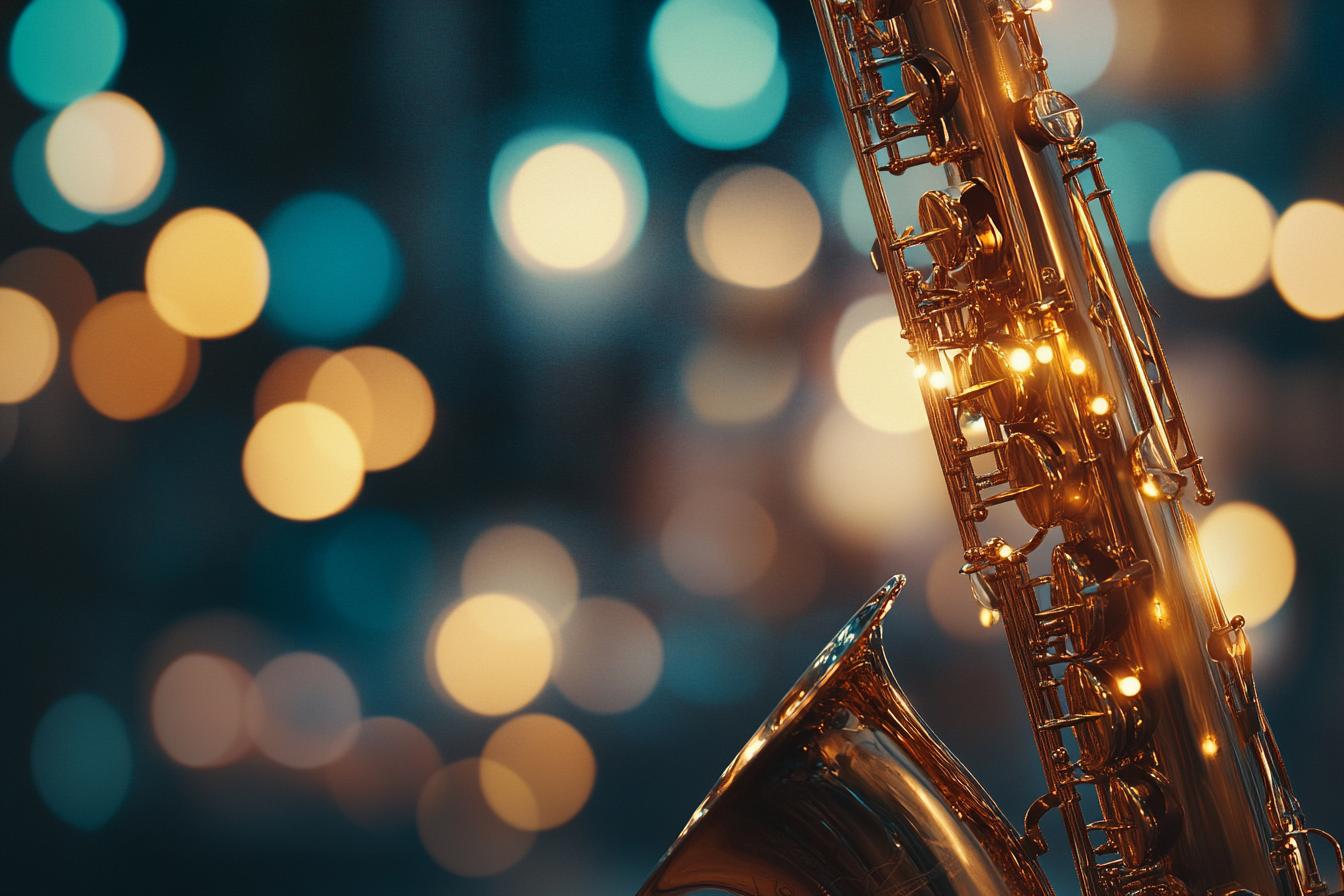The advent of radio had a profound impact on jazz, offering a new platform for musicians to reach audiences far beyond the confines of live performance venues. Prior to the 1920s, jazz was primarily a regional phenomenon, confined to the vibrant but geographically limited scenes of New Orleans, Chicago, and New York City. Radio, however, transcended these boundaries, broadcasting the sounds of jazz across the nation and even internationally. This newfound reach fostered a sense of national identity around jazz, uniting diverse communities through a shared musical experience. The rise of radio also introduced a new layer of professionalism to the jazz world, with musicians now performing for a wider audience and facing the pressure of commercial success.
The influence of radio on jazz extended beyond simply broadcasting live performances. Radio stations began to commission and produce original jazz recordings, creating a new market for musicians and fostering a sense of innovation. Radio also played a key role in the development of jazz subgenres, such as swing and bebop, by providing a platform for these styles to gain wider exposure. Can you imagine how different the world of music would be if jazz had not been able to leverage the power of radio to reach a global audience? It’s a testament to the enduring power of radio to shape the cultural landscape and bring new sounds to the world.

Jazz Innovations
1. Jazz Innovations
Jazz, a genre born in the United States at the turn of the 20th century, has always been a playground for musical experimentation. Its roots lie in the fusion of ragtime, blues, and European musical traditions, but jazz musicians consistently pushed boundaries and created new sounds. Early innovators like Louis Armstrong and Jelly Roll Morton established improvisation as a core element of the genre, paving the way for future generations to explore new harmonic structures, rhythmic patterns, and instrumental techniques.
Throughout its history, jazz has undergone numerous transformations, with each era bringing its own set of innovations. The swing era, for example, embraced big band arrangements and complex harmonies, while bebop emphasized virtuosic improvisation and rapid tempos. Later, musicians like Miles Davis and John Coltrane explored modal jazz, free jazz, and fusion, further expanding the musical vocabulary of the genre. These innovations not only shaped the evolution of jazz itself but also influenced countless other musical genres, proving the enduring power of this uniquely American art form.
2. Improvisation and Syncopation
Improvisation, the art of creating music spontaneously, became a cornerstone of jazz. Jazz musicians, drawing upon their musical knowledge and creativity, would weave melodies and rhythms in the moment, building upon the existing framework of the song. This freedom of expression allowed for unique and dynamic performances, differentiating jazz from more structured genres.
Syncopation, the deliberate placement of accents off the beat, further enriched the rhythmic landscape of jazz. By shifting the emphasis away from expected strong beats, syncopation created a sense of swing and rhythmic tension, adding a playful and unpredictable quality to the music. This rhythmic interplay, combined with improvisation, gave jazz its distinctive energy and allure, captivating audiences worldwide.
3. Blues Influence
Jazz, as we know it, would not exist without the blues. The blues provided the foundation for jazz’s rhythmic and harmonic structure, its expressive vocal style, and its improvisational nature. The blues’ characteristic use of the blue notes, those slightly flattened notes that give the music its distinctive sound, became a cornerstone of jazz. Furthermore, the blues’ emphasis on storytelling and emotional expression, often focusing on themes of love, loss, and hardship, resonated deeply with jazz musicians. They drew inspiration from the blues to create their own stories through their music.
Jazz musicians took the blues’ core elements and expanded upon them, adding their own unique twists and turns. They explored new harmonies, experimented with different rhythms, and developed sophisticated improvisation techniques. However, the blues’ influence remained strong, providing a constant source of inspiration and grounding the music in its soulful roots. The blues’ influence is evident in every corner of jazz, from the soulful ballads of Billie Holiday to the fiery improvisations of Charlie Parker.
4. Harmonic Development
Harmonic development in jazz is a fascinating aspect of the genre’s evolution. Jazz musicians, unlike their classical counterparts, don’t strictly adhere to pre-determined chord progressions. Instead, they embrace improvisation and explore unexpected harmonic relationships. This freedom allows them to create unique and complex harmonies, adding depth and richness to their music. Jazz musicians frequently incorporate chromaticism, altered chords, and extended harmonies, pushing the boundaries of traditional music theory.
These innovative harmonic approaches contribute significantly to the improvisational nature of jazz. By manipulating chords and exploring unusual progressions, jazz musicians can create unexpected sonic landscapes and challenge listeners’ expectations. This constant exploration of harmony is one of the key factors that makes jazz such a dynamic and ever-evolving art form. The ability to improvise within a harmonic framework allows jazz musicians to create music that is both spontaneous and structured, simultaneously familiar and surprising.
5. New Instruments and Techniques
Jazz musicians have always been at the forefront of innovation, pushing boundaries and experimenting with new sounds. This spirit of experimentation led to the incorporation of new instruments into the jazz orchestra. The vibraphone, with its shimmering tones, brought a new dimension to the sound, while the electric guitar added a punchy and versatile element. The saxophone, with its wide range and expressive capabilities, became a staple instrument, while the trumpet provided a bright and powerful voice. These instruments, along with the traditional piano, bass, and drums, formed the foundation for a rich and diverse musical landscape.
Beyond new instruments, jazz musicians also developed innovative techniques. Improvisation, a core element of jazz, flourished with new approaches. Musicians experimented with extended harmonies, complex rhythms, and unconventional melodies. They explored new ways to bend notes, create unique effects, and push the limits of their instruments. These techniques, coupled with the introduction of new instruments, transformed the sound of jazz, paving the way for exciting new styles and subgenres.
6. Evolution of Styles Swing Bebop etc
Jazz, a vibrant and improvisational art form, has undergone a fascinating evolution, showcasing a tapestry of diverse styles. Swing, characterized by its syncopated rhythms and energetic drive, emerged in the 1930s, laying the foundation for the genre’s popularity. Musicians like Duke Ellington and Count Basie established swing’s signature sound, captivating audiences with its infectious groove and danceable melodies. However, as the 1940s dawned, a new wave of innovation arose, known as bebop. Bebop, spearheaded by Charlie Parker and Dizzy Gillespie, embraced complex harmonies, rapid tempos, and improvisational virtuosity. This style challenged traditional jazz conventions, emphasizing individual expression and technical mastery.
Bebop’s influence extended beyond its own era, paving the way for subsequent jazz styles. Cool jazz, emerging in the late 1940s and early 1950s, offered a more relaxed and melodic approach, with a focus on smoother harmonies and a less frenetic tempo. Hard bop, gaining popularity in the mid-1950s, blended elements of bebop with blues and gospel influences, creating a powerful and soulful sound. These stylistic shifts reflected changing cultural landscapes and the evolving artistic aspirations of musicians, showcasing jazz’s remarkable adaptability and its capacity for constant reinvention.
Conclusions
So, there you have it! Jazz, a musical journey that’s been jam-packed with creativity and innovation. From its roots in the blues, jazz has exploded into a wild world of improvisation, syncopated rhythms, and harmonic adventures. Think of those smooth swing melodies, the mind-blowing bebop solos, and the funky sounds of fusion – all born from jazz musicians pushing boundaries and exploring new sounds. It’s a music that’s constantly evolving, just like the instruments and techniques that jazz artists keep discovering. Jazz is more than just music – it’s a spirit, a feeling, and a conversation that’s been happening on the radio waves for decades, and it’s still going strong!
